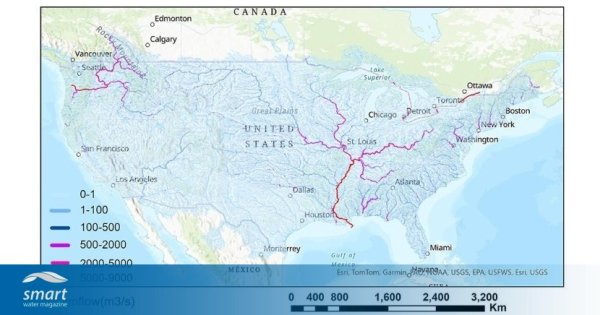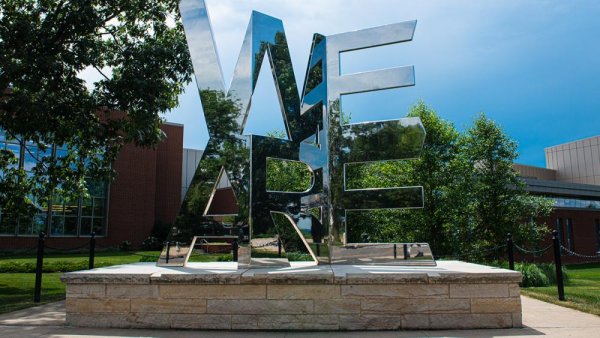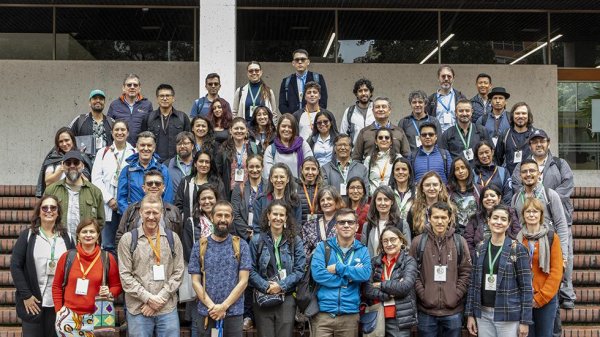Measuring how – and where – Antarctic ice is cracking with new data tool
| psu.edu
To better understand processes driving change in Antarctic ice shelves, a team led by researchers at Penn State developed a new method to evaluate cracks that destabilize the shelves and accelerate ice losses.
25 years of online geospatial education to be celebrated at Esri User Conference
| psu.edu
The Penn State Department of Geography will celebrate 25 years of online geospatial education with a July 16 symposium, held alongside the 2025 Esri User Conference in San Diego and available virtually.
Penn State study finds toxic PFAS in 18% of private wells in Pennsylvania
| whyy.org
About 18% of private wells in Pennsylvania are contaminated with toxic PFAS chemicals, according to a new Pennsylvania State University study.
Penn State’s Ag Progress Days features commercial exhibits, field demos
| psu.edu
The latest in farming products, services, equipment and technology will be on full display during this year’s Ag Progress Days, which will take place Aug. 12-14 at the Russell E. Larson Agricultural Research Center.
‘Scialog’ grant to study how rising ocean temperatures affect fish behavior
| psu.edu
A wildlife behavioral ecologist at Penn State is part of a multi-institution team that received funding from Scialog: Neurobiology and Changing Ecosystems, a international three-year initiative that aims to spark new science exploring neurobiological responses to rapidly changing environments.
Novel model improves predictions of flood severity, place and time in continental U.S. with AI
| smartwatermagazine.com
Floods are some of the most devastating natural disasters communities in the United States face, causing billions of dollars of damage annually, according to the National Weather Service. This article features Penn State research.
Musk’s Grok AI facility faces opposition as environmentalists target data centers’ emissions
| justthenews.com
Tech companies are looking to natural gas to power their data centers with natural gas. Opponents of Elon Musk's Memphis facility say its turbines are "silent strangulation" by air pollution. This article cites a news column from Penn State’s Institute of Energy and the Environment (IEE) titled “Why AI Uses So Much Energy—and What We Can Do About It.”
World's biggest polluter is in the US, study finds
| newsweek.com
The U.S. military has been identified as the largest single institutional emitter of greenhouse gases worldwide, according to a new study. This article features Penn State research.
Building rainwater resilience in India’s cities
| orfonline.org
Rising urban floods demand better rainwater planning. This brief outlines lessons from China, Spain, and the UAE to help Indian cities manage rainwater and mitigate disaster impacts. This article cites a news column from Penn State’s Institute of Energy and the Environment (IEE) titled “Glacial Lake Outburst Floods: Loss of Life and Infrastructure.”
Engineering alumni society recognizes excellence at annual awards ceremony
| psu.edu
The Penn State Engineering Alumni Society (PSEAS) held its annual awards ceremony on June 20 at the State Theatre, building on its 53-year tradition of honoring excellence among engineering faculty, staff and alumni through the PSEAS awards. The award recipients were recognized in the categories of teaching, research, advising and service.
Science, art and action: Páramos 2025 Symposium ignites global collaboration
| psu.edu
In early June, Bogotá, Colombia, became the center of global páramo research as faculty and students from Penn State’s College of Agricultural Sciences joined forces with international partners to host the landmark Páramos 2025 Symposium.
Improving predictions of flood severity, place and time with AI
| psu.edu
A research group, including several Penn State researchers, developed a computational model to streamline flood prediction in the continental United States. Their model, which they call a differentiable routing model, incorporates physical readings — like temperature and river height — into a system that uses artificial intelligence to simulate and predict water movement.












